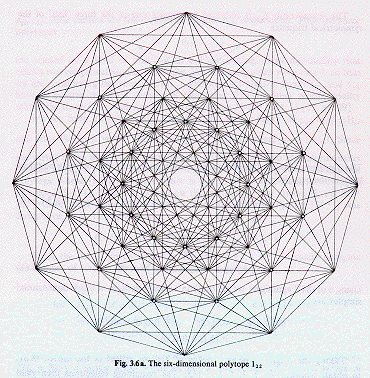
In CERN-CDS-EXT-2004-031, E6, Strings, Branes, and the Standard Model, the 5-graded Graded Lie Algebra of the 78-dimensional exceptional Lie algebra
= 8-dim + 16-dim + ( Spin(8) + R + R ) + 16-dim + 8-dim =
= 8-complex-dim + 16-complex-dim + ( Spin(8) + R + R )
provides a physical interpretation of the 26 dimensions of String Theory.
Of the 26 dimensions of String Theory, 2 correspond to complex structure of E6, 8 correspond to 4-dimensional SpaceTime and 4-dimensional Internal Symmetry Space, and 16 = 8+8 represent 8 first-generation fermion particles and 8 first-generation antiparticles.
Although the 8 SpaceTime and Internal Symmetry Space dimensions can be thought of as, at least approximately at scales much larger than the Planck length, being continuous,
the 16 = 8+8 fermion particles and antiparticles are clearly 16 = 8+8 discrete things, and their representation as such requires discretization of the corresponding 16 dimensions of 26-dimensional String Theory, which is accomplished by Orbifolding. The purpose of this paper is to describe the geometry of such Orbifolding.
Begin by looking at the root vector structure of E6:
the 6-dimensional polytope formed by the root vectors of the Lie algebra E6 has 72 vertices. A 2-dimensional projection, by Peter McMullen,

has 72 vertices in sets of 12 on 4 concentric circles, 2 of which (white centers) are double (one vertex behind another). The 6-dimensional 72-vertex Root Vector Diagram of E6 can be constructed from the 4-dimensional 24-vertex 24-cell Root Vector Diagram of D4 by adding to it the following:
This construction is the first three stages of the 5-stage construction of the E8 Root Vector Diagram,
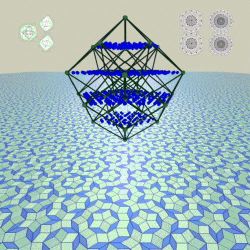
that is, proceeding from the left in the above image, the D4 24-cell, the two D5 hyperoctahedra cross polytopes, and the 5-dim hypercube.
The 32 vertices of the 5-dim hypercube correspond to the 16 complex (32 real) dimensions of the symmetric space E6 / D5xU(1), corresponding to a bounded complex domain whose Shilov boundary is an 8 complex (16 real) dimensional non-tube-type domain.
Here (adapated from an image on a johnh web page) is an image of a 5-dim hypercube
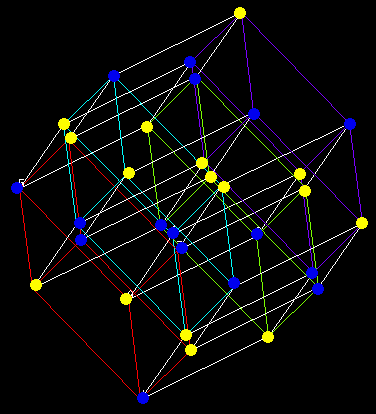
in which you can see the graded structure of its vertices - 1 (top yellow), 5 (blue), 10 (yellow), 10 (blue), 5 (yellow), and 1 (bottom blue).
Divide the 32 vertices into two sets of 16
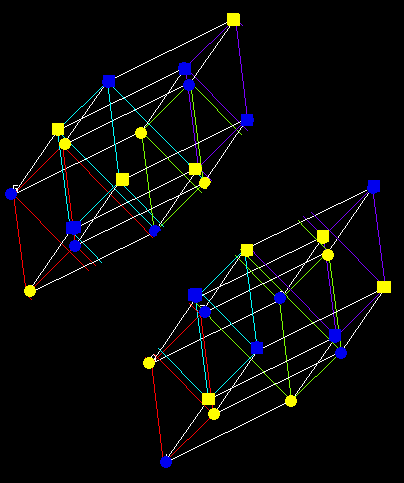
each of which corresponds to a 16-vertex 4-dimensional hypercube, whose vertices have graded structure 1, 4, 6, 4, 1.
Now look at one of the 4-dimensional hypercubes (call it the +hypercube)
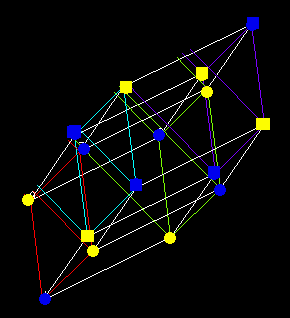
and notice that it is made up of two 3-dimensional cubes (one shown with circle vertices, the other shown with square vertices.
In CERN-CDS-EXT-2004-031, E6, Strings, Branes, and the Standard Model, orbifolding to discretize fermion particles and antiparticles corresponding to the 16-vertex +hypercube is done this way:
"... To use Urs Schreiber's idea to get rid of the world-brane scalars corresponding to the Octonionic O+ space, orbifold it by the 16-element discrete multiplicative group Oct16 = {+/-1,+/-i,+/-j,+/-k,+/-E,+/-I,+/-J,+/-K} to reduce O+ to 16 singular points {-1,-i,-j,-k,-E,-I,-J,-K,+1,+i,+j,+k,+E,+I,+J,+K}.Let the 8 O+ singular points {-1,-i,-j,-k,-E,-I,-J,-K} correspond to the fundamental fermion particles {neutrino, red up quark, green up quark, blue up quark, electron, red down quark, green down quark, blue down quark} located on the past D7 layer of D8. [These 8 can be taken to be the cube
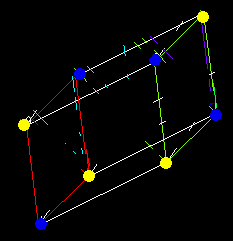
with 8 circle vertices.]Let the 8 O+ singular points {+1,+i,+j,+k,+E,+I,+J,+K} correspond to the fundamental fermion particles {neutrino, red up quark, green up quark, blue up quark, electron, red down quark, green down quark, blue down quark} located on the future D7 layer of D8. [These 8 can be taken to be the cube with 8 circle vertices.] ...".
A geometrical picture of the Orbifolded 8-dimensional fermionic first-generation particle representation space as 8 of the 26 dimensions of String Theory comes from looking at the organization of the 16 vertices of the 4-dimensional +hypercube. Each of its two 8-vertex 3-dimensional cubes can be seen as two 3-dimensional octahedron cross-polytopes
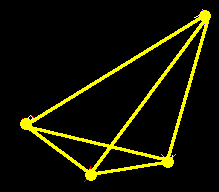
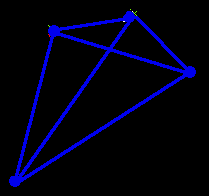
or also as one 4-dimensional hyperoctahedron cross-polytope
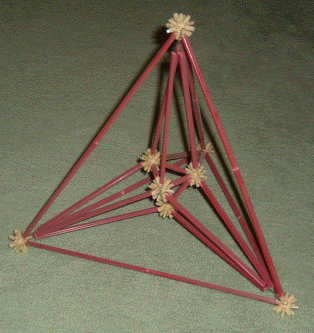
Therefore, the 16 vertices of the 4-dimensional +hypercube, made up of the two 8-vertex 3-dimensional cubes taken together, can be seen as a 4-dimensional hyperoctahedron cross-polytope in one 4-dimensional space plus a second 4-dimensional hyperoctahedron cross-polytope in a second 4-dimensional space,
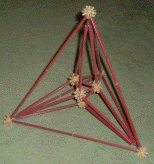

or also as one 16-vertex 8-dimensional hyperoctahedron cross-polytope.
Therefore:
The geometry related to the other 16 vertices of the 5-dimensional 32-vertex hypercube, the 4-dimensional -hypercube, and the first-generation fermion antiparticles, is similar.
Note that:
each + vertex (say, +i) is the singularity representative of the segment [0,+i]
which in turn represents the +i component part of all of the orbifold with nonzero +i coordinate
which in turn by extension to the full line (-oo, -i, 0, +i, oo) and by triality automorphism among the three octonionic spaces O+ representing first-generation fermion particles, O- representing first-generation fermion antiparticles, and Ov 8-dimensional spacetime, has a global connection with all of 8-dimensional spacetime
which is consistent with the fact that
Fermions - quaternions - have a Dirac belt trick type connection with global spacetime.